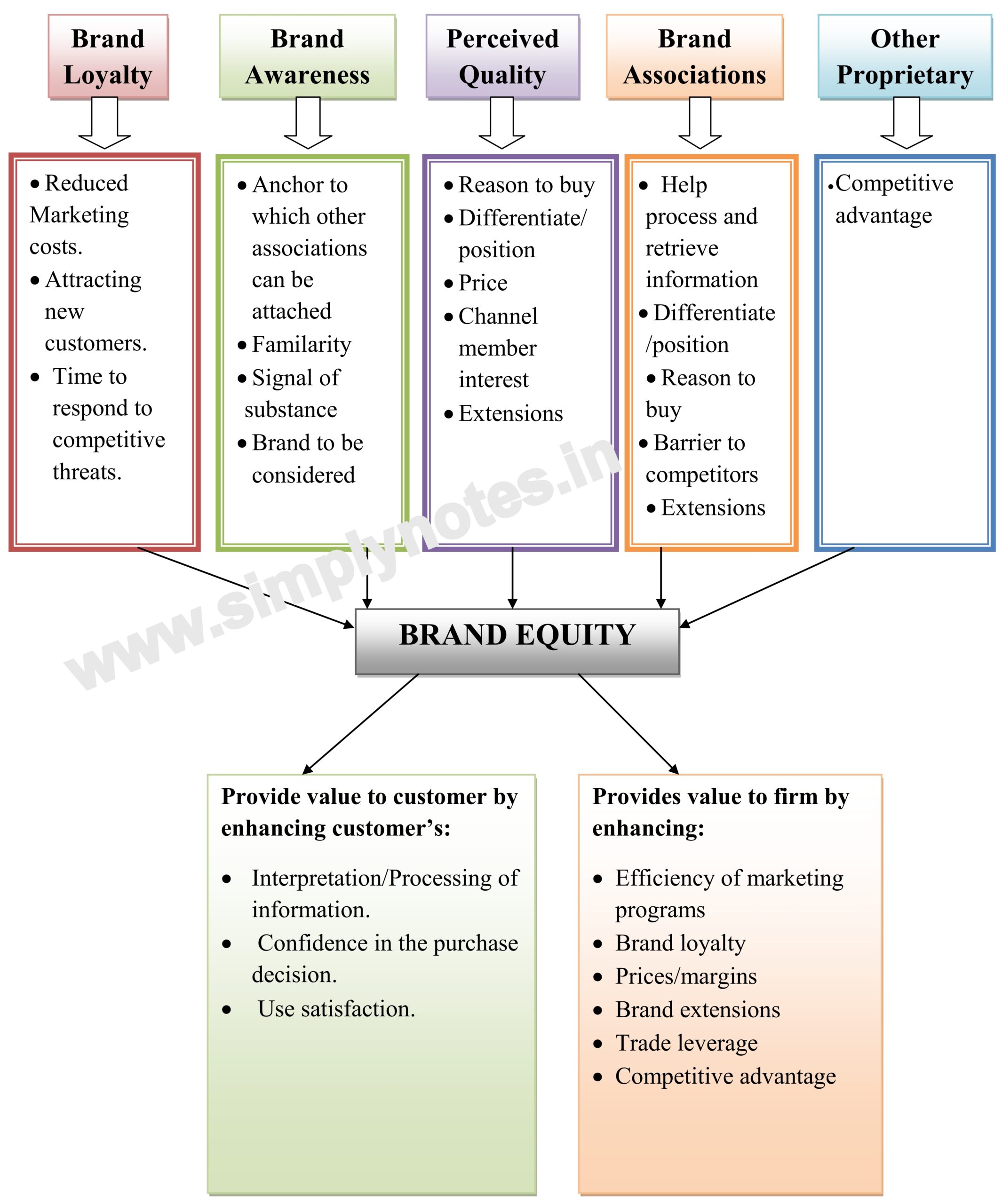Aaker’s Brand Equity model
In his Brand Equity model, David A. Aaker identifies five brand equity components: (1) brand loyalty, (2) brand awareness, (3) perceived quality, (4) brand associations and (5) other proprietary assets. Aaker defines brand equity as the set of brand assets and liabilities linked to the brand – its name and symbols – that add value to, or subtract value from, a product or service. These assets include brand loyalty, name awareness, perceived quality and associations. This definition stresses ‘brand-added value’; however, his model does not make a strict distinction between added value for the customer/ consumer and added value for the brand owner/ company.
(1) brand loyalty,
(2) brand awareness,
(3) perceived quality,
(4) brand associations and
(5) other proprietary assets.
Apart from the five components, the model also reflects indicators (and/or consequences) of the pursued branding policy. It goes without saying that brand equity will rise as brand loyalty increases, brand name awareness increases, perceived quality increases, brand associations become stronger (and more positive), and the number of brand-related proprietary assets increase. The model also provides insight into the criteria that indicate to what degree actual value is created with both consumer and company due the pursued branding policy. David Aaker’s Brand Equity Model defines the five following brand equity components:
1. Brand loyalty
The extent to which people are loyal to a brand is expressed in the following factors:
– Reduced marketing costs (hanging on to loyal customers is cheaper than charming potential new customers)
– Trade leverage (loyal customers represent a stable source of revenue for the distributive trade)
– Attracting new customers (current customers can help boost name awareness and hence bring in new customers)
– Time to respond to competitive threats (loyal customers that are not quick to switch brands give a company more time to respond to competitive threats)
2. Brand awareness
The extent to which a brand is known among the public, which can be measured using the following parameters:
– Anchor to which associations can be attached (depending on the strength of the brand name, more or fewer associations can be attached to it, which will, in turn, eventually influence brand awareness)
– Familiarity and liking (consumers with a positive attitude towards a brand, will talk about it more and spread brand awareness)
– Signal of substance/ commitment to a brand.
– Brand to be considered during the purchasing process (to what extent does the brand form part of the evoked set of brands in a consumer’s mind)
3. Perceived quality
The extent to which a brand is considered to provide good quality products can be measured on the basis of the following five criteria:
– The quality offered by the product/ brand is a reason to buy it
– Level of differentiation/ position in relation to competing brands
– Price (as the product becomes more complex to assess, and status is at play, consumers tend to take price as a quality indicator)
– Availability in different sales channels (consumers have a higher quality perception of brands that are widely available)
– The number of line/ brand extensions (this can tell the consumer the brand stands for a certain quality guarantee that is applicable on a wide scale)


